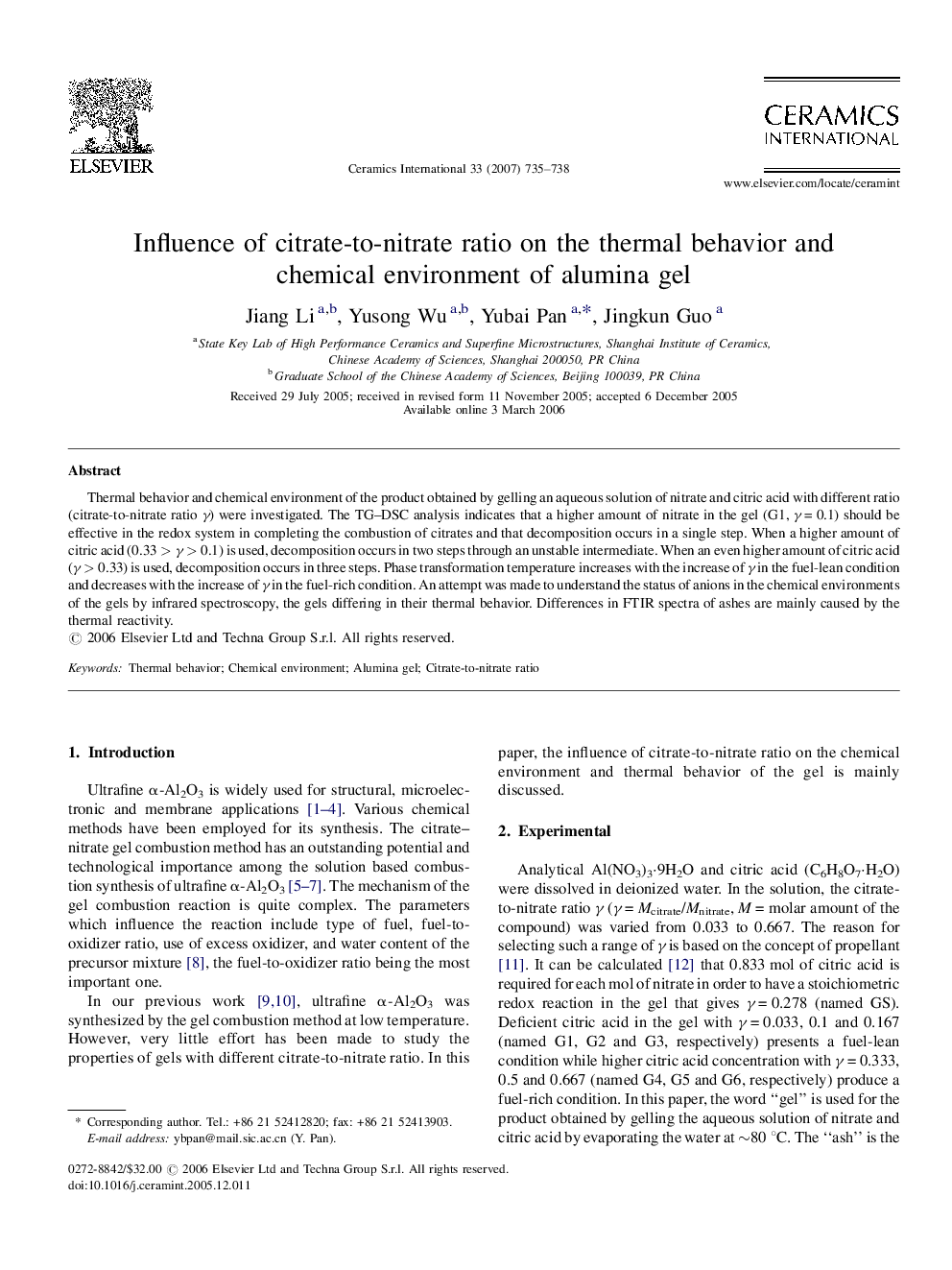| Article ID | Journal | Published Year | Pages | File Type |
|---|---|---|---|---|
| 1464788 | Ceramics International | 2007 | 4 Pages |
Thermal behavior and chemical environment of the product obtained by gelling an aqueous solution of nitrate and citric acid with different ratio (citrate-to-nitrate ratio γ) were investigated. The TG–DSC analysis indicates that a higher amount of nitrate in the gel (G1, γ = 0.1) should be effective in the redox system in completing the combustion of citrates and that decomposition occurs in a single step. When a higher amount of citric acid (0.33 > γ > 0.1) is used, decomposition occurs in two steps through an unstable intermediate. When an even higher amount of citric acid (γ > 0.33) is used, decomposition occurs in three steps. Phase transformation temperature increases with the increase of γ in the fuel-lean condition and decreases with the increase of γ in the fuel-rich condition. An attempt was made to understand the status of anions in the chemical environments of the gels by infrared spectroscopy, the gels differing in their thermal behavior. Differences in FTIR spectra of ashes are mainly caused by the thermal reactivity.
